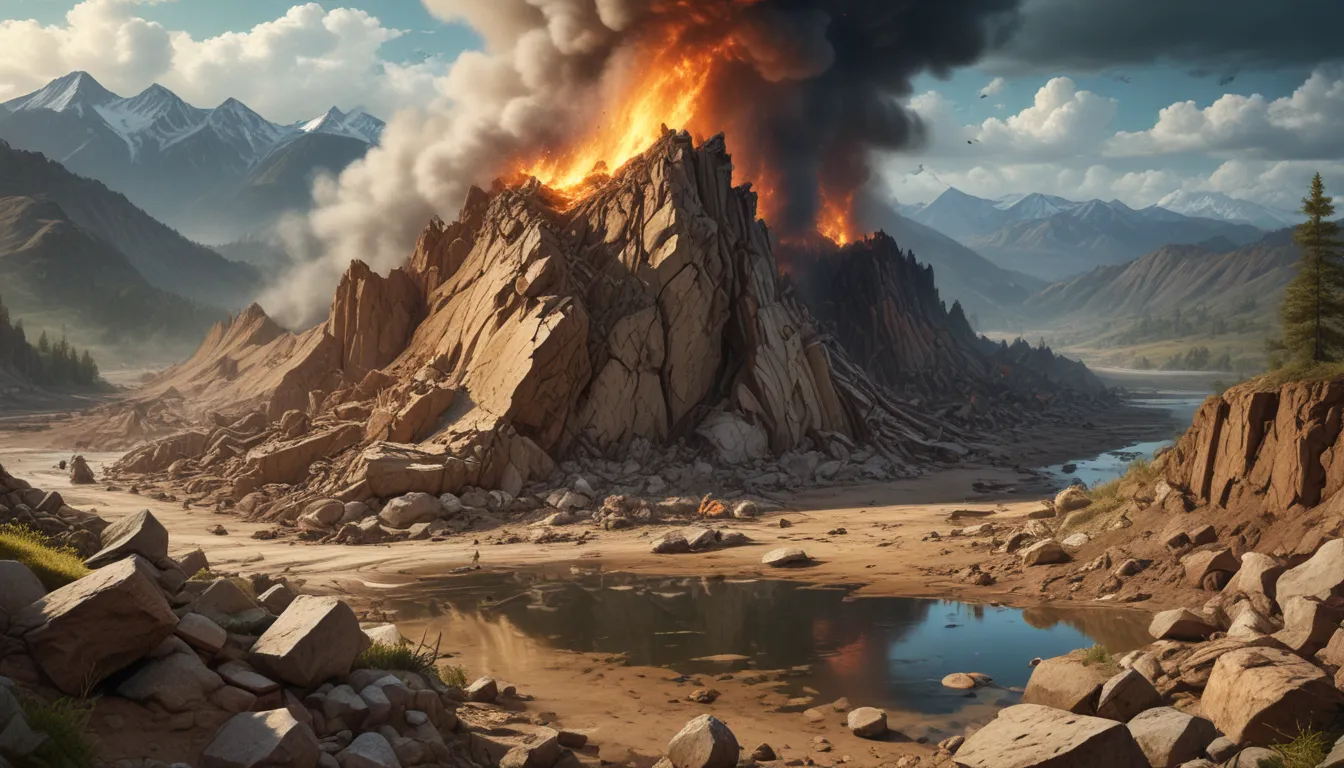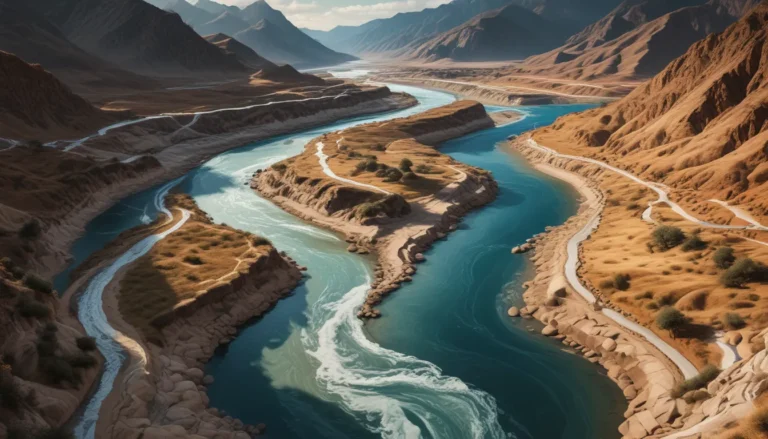A Note About Images: The images used in our articles are for illustration purposes only and may not exactly match the content. They are meant to engage readers, but the text should be relied upon for accurate information.
Welcome to a fascinating journey into the world of earthquakes, where the earth’s mighty forces reveal their secrets in a symphony of shaking grounds and ruptured surfaces. While earthquakes may strike fear into our hearts, they also hold a wealth of captivating information waiting to be discovered. Join us as we delve into the depths of this geophysical phenomenon and uncover the intriguing facts that lie beneath the surface.
Unveiling the Common Effects of Earthquakes
The shaking and ground ruptures caused by earthquakes are perhaps the most common effects of these powerful geological events. The intensity of the shaking varies depending on factors such as magnitude, distance from the epicenter, and local geology. Ruptures, on the other hand, follow fault lines and can stretch for kilometers, wreaking havoc on everything in their path. From roads and bridges to dams and nuclear power plants, ground ruptures leave a trail of destruction in their wake.
The Enigmatic Phenomenon of Liquefaction
Liquefaction, a lesser-known effect of earthquakes, occurs when sandy or loose soil with high groundwater content is subjected to intense shaking. The solids in the ground separate, and water fills the gaps, transforming the ground into a slurry that cannot support structures. To prevent liquefaction-related disasters, buildings are often required to have foundations on solid rock, ensuring stability during seismic events.
From Flames to Landslides: The Varied Impacts of Earthquakes
Earthquakes can trigger fires by damaging electrical lines and igniting flammable materials in homes and offices. Leaking gas lines pose a particularly dangerous fire hazard, with even small sparks leading to devastating explosions. Landslides are also a common consequence of seismic activity, as the shaking destabilizes hillsides and mountainsides, causing them to collapse. Communities living in steep or sloping areas are at risk of being buried under landslides, highlighting the importance of safety precautions during and after earthquakes.
The Wrath of Tsunamis: Nature’s Deadly Wave
Tsunamis, unleashed by underwater earthquakes, are among the deadliest effects of seismic events. These powerful waves are generated by the rapid movement of large volumes of water, resulting in devastation along coastal areas. Tsunamis can travel long distances, affecting countries far from the earthquake’s epicenter. The destructive force of tsunamis serves as a stark reminder of the immense power of nature.
Delving into History: Legendary Earthquakes of the Past
Throughout history, devastating earthquakes have left their mark on civilizations, claiming lives and reshaping landscapes. The 1556 Shaanxi Earthquake stands as the deadliest in human history, with Chinese records estimating 830,000 deaths across multiple provinces. The 1976 Tangshan Earthquake holds the grim title of the deadliest earthquake of the 20th century, claiming the lives of 242,000 people and wreaking havoc on the city of Tangshan. The 1960 Chilean Earthquake, with its magnitude of 9.5, remains the most powerful earthquake ever recorded, triggering tsunamis that spread across the Pacific.
Aftershocks and Foreshocks: The Unpredictable Nature of Earthquakes
Aftershocks, following the main earthquake, pose a significant risk as the ground adjusts to the seismic changes. Their unpredictability and potential for further damage make them a source of concern for affected areas. Foreshocks, occurring before the main earthquake, can provide clues about future seismic events, but their reliability as predictors remains uncertain. Seismologists continue to grapple with the challenge of forecasting earthquakes, with mixed success in predicting their occurrence and magnitude.
The Influence of Human Activity on Earthquakes
Human activities, such as wastewater injection in underground storage wells, can induce earthquakes, as seen in the 2011 Oklahoma Earthquake. Understanding the connection between human actions and seismic events highlights the complex interactions between human civilization and the natural world. Seismologists rely on tools like seismometers and seismographs to monitor vibrations in the Earth and study earthquake patterns, shedding light on the inner workings of our planet.
Building Resilience: Techniques to Mitigate Earthquake Damage
Architects and engineers employ various strategies to protect buildings from earthquake damage, including using weights, slosh tanks, and structural reinforcements. Mobile weights and slosh tanks help stabilize buildings during seismic events, while reinforced structures withstand the forces of the shaking ground. Preparedness measures, such as emergency food and water reserves, evacuation plans, and power sources, are essential for individuals and communities to minimize the impact of earthquakes.
Exploring Earthquakes Beyond Earth: From the Moon to Mars
Earthquakes are not limited to our planet, as evidenced by seismic activity on the Moon and Mars. The Moon experiences lunarquakes caused by tidal stresses from the Earth, offering insights into its geological composition. Mars, with its long-extinct volcanoes and tectonic history, hints at a seismic past marked by Marsquakes. Studying earthquakes on celestial bodies expands our understanding of planetary dynamics and geological processes beyond Earth.
Conclusion: Navigating the Tremors of Earthquakes
As we conclude our journey into the world of earthquakes, we glimpse the immense power and complexity of these natural phenomena. From the destruction wrought by tsunamis to the resilience of reinforced buildings, earthquakes shape our landscapes and challenge our understanding of the Earth’s vast geological forces. By delving into the history, impacts, and science of earthquakes, we gain a deeper appreciation for the interconnectedness of nature and human civilization. May these insights inspire us to embrace preparedness, resilience, and stewardship in the face of nature’s tremors.






